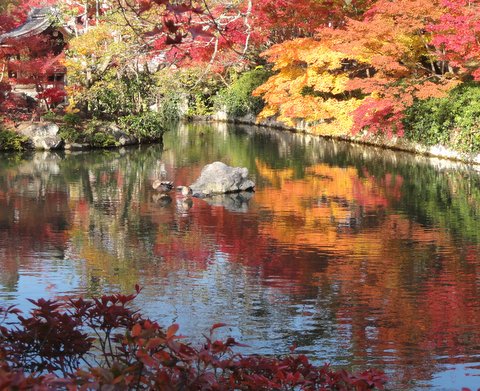Good morning!
The full moon is reflected on the floor. The full moon represents the Buddha mind. All over the world zen practitioners are in the Rohatsu sesshin, where the Buddha was awakened. The Buddha mind, like the full moon, is the full free function. We must liberate our limited karmic life for full free function.
While I was inJapan, I read Kazuo Inamori’s “How to Live.” The author founded the Kyoto Prize and Kyocera, and he renovated other big companies such as the bankrupted Japan Air Lines. His policy and practice has been to encourage everyone who comes into contact with him and his way of life.
He says that how to live is the most important question, and how we can live the best life, with the utmost sincerity and striving, with plans not in black and white, but in colors. He planned his life: the first 20 years in preparation, the second 40 years in the world, and the last 20 years in the awakened way.
While he was going on alms rounds, exhausted and hurt with his worn straw sandals, he was given a donation by an old lady very naturally, by which he was embraced in warm bliss. He is confident in the universal truth, wherein we can attain our life or work goals by prognosis multiplied by power and practice.
The practitioners of the awakened way, especially those in the Great Vehicle, Mâha-yâna, aspire to the six pâramitâs, perfections, of giving, precepts, patience, striving, concentration, and prognosis. They say any one perfection can perfect all other perfections, as they are all intricately interconnected.
These six perfections correspond to the four embracing matters of giving, loving words, beneficial actions, and sameness (with others), which correspond to the four immeasurables or Brahma-vihâra, Brahman’s abode, of friendship, compassion, joy, and equanimity or throwing away (self).
Dogen said that the best way to aspire to the bodhi-mind, awakening mind, is to remember death. He also said that clarifying birth and death is the cause and condition for the greatest matter of Buddhists. If we really understand our death, we can understand and activate our life.
If we bring penetrating prognosis into our existence, we realize that all things are substanceless or empty of self-substance, shûnya. This is realized in our sitting. We have many problems in our world, but we cannot solve them without becoming awakened in our existence and perfecting our life.
We can live in wholly wholesome harmony and happiness. I sent a blog piece on the full moon festival inOkinawa, featuring messages from all over the world, to our e-list. We aspire to and achieve prognosis and peace, which diminish and destroy our three poisons of anger, thirst, and delusion.
We hope we will realize prognosis and peace, connecting all aspiring ones, awakening beings, great beings, working together every day. Let’s put our whole being into our practice, especially at this time, concentrating on intensive practice toward the day of the Buddha’s nirvana, unconditioned peace, and unsurpassed awakening.
12/2/12

